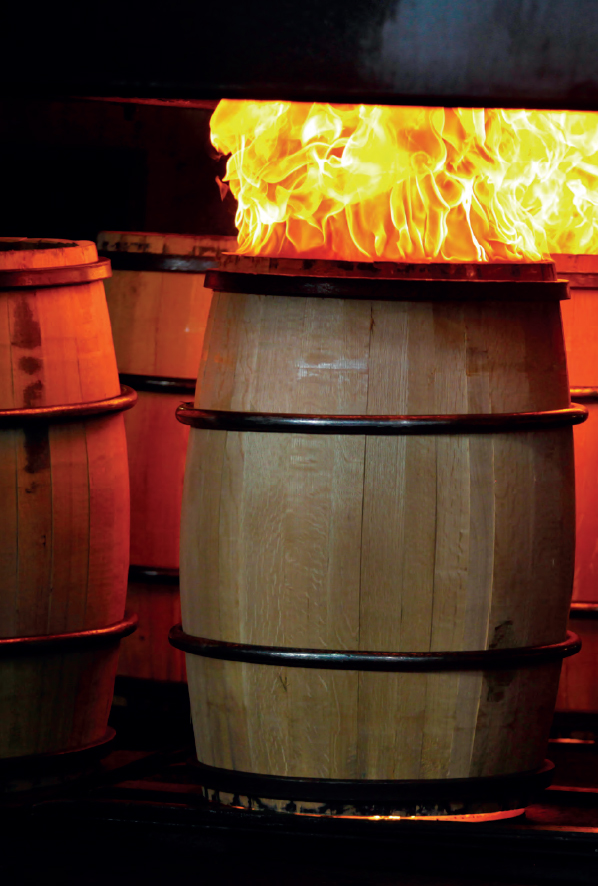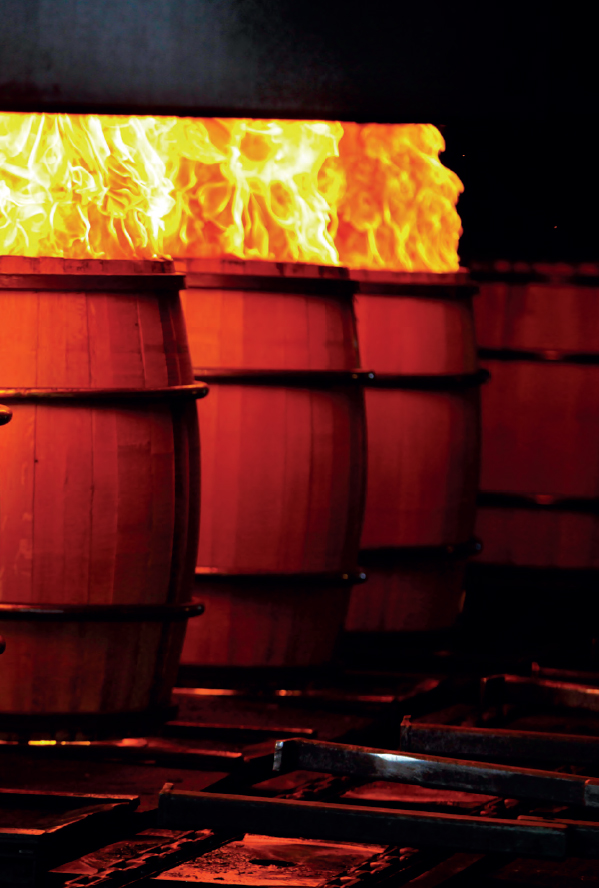Introduction
Greetings, bourbon-loving traveler, for that is who you are if you have picked up this book. Like a wine lover who dreams of traveling to Bordeaux or a beer enthusiast with visions of visiting the breweries of Belgium, you are probably planning a pilgrimage to Kentucky's bourbon country. This guide will help you get the most out of your bourbon tour of the Bluegrass State.
Between this book's covers you will find information about each of the distilleries that offer tours, as well as other stops of interest to a bourbon aficionado—contemporary and historic sites with bourbon connections, restaurants featuring bourbon-accented dishes, bars with extensive bourbon collections, and even retail outlets that offer a great selection of bourbons, since many brands seldom, if ever, leave the state. Also included are discussions of how bourbon is made and what to look for when tasting and evaluating bourbon, along with a list of bourbon-related terms you will come across in this book and on your distillery tours. Whether you have a long experience of bourbon or are a newcomer to the pleasures of sipping Kentucky's amber elixir, you will find useful information here.
Various aspects of bourbon's history are covered throughout the text, but one striking fact is that before Prohibition was enacted in 1920, more than 200 distilleries operated in Kentucky. After repeal, only 61 reopened. The consolidation of distilleries throughout the twentieth century meant that by 2001, only 10 were operating. Now the numbers are slowly growing again. The existence of nearly 200 different bourbons can be explained by the fact that most distilleries produce several brands.
Bourbon is closely bound to Kentucky's history. It is also important today. According to the Kentucky Distillers’ Association (KDA), the bourbon industry directly employs 3,200 people. Taking into account associated industries, such as barrel making and the transportation of ingredients and products, the number of Kentuckians whose jobs are tied to the bourbon industry exceeds 10,000. In fact, during the recession of 2008–2010, the only manufacturers in the state that added jobs were the distilleries.
After a decline in bourbon drinking during the second half of the last century, bourbon is now enjoying a global consumer boom. Just over 455,000 barrels were produced in 1999. By 2010, that number had doubled to almost 938,000. Also in 2010, there were 4.7 million barrels of bourbon aging in Kentucky warehouses, surpassing the 4.3 million human population of the state—a statistic that makes a bourbon-sipping Kentuckian feel very secure. According to the KDA, all this distilling activity adds up to some impressive revenues. The distilleries pay some $115 million in local and state taxes, and the industry generates $3 billion in gross state product. Bourbon is obviously a big part of the Kentucky economy.
How to Get to Bourbon Country
Most of Kentucky's bourbon distilleries are found in the central Bluegrass region, within a triangle defined by points at Louisville, Lexington, and Bardstown. If you want to tour on your own, you will need a car, but the drives are easy, and most of the routes are scenic. Much of the eastern portion of this region encompasses Kentucky's famous Thoroughbred horse farms. The area is fairly compact: travel time between Louisville and Lexington and between Lexington and Bardstown is about an hour, and the drive between Bardstown and Louisville takes about forty-five minutes. So even if you have only one day to devote to touring, it is possible to visit more than one distillery. I would recommend touring no more than two if you also want to try a restaurant where you can enjoy bourbon tastings. If you have at least three days, you can probably visit all the distilleries that offer tours, enjoy several area restaurants, and perhaps visit some of the other attractions listed in this book. If you allow yourself the better part of a week, you will be able to see nearly all the places mentioned here.
A typical horse farm in Kentucky.

The interstate highways serving Kentucky are I-65, I-64, I-71, and I-75. Louisville is a two-hour drive from Indianapolis or Cincinnati, about three hours from Nashville, four hours from St. Louis, five hours from Chicago, and seven hours from Atlanta. The state is also served by three major airports: Louisville International Airport, which most locals still refer to as Standiford Field (http://www.flylouisville.com/); Lexington's Bluegrass Airport (http://www.bluegrassairport.com/); and the Cincinnati/Northern Kentucky International Airport (www.cvgairport.com/).
When to Visit
Spring and fall are probably the best times for a bourbon lover to travel to the state. The weather is mild, with warm days and cool nights, and the countryside is at its prettiest, with either spring blossoms or fall colors. September is National Bourbon Month, and that's when the Kentucky Bourbon Festival is held in Bardstown. Most distilleries suspend operations in July and August, when temperatures soar into the nineties and the humidity climbs. Even though modern fermenters have cooling coils to prevent yeast from dying of excessive heat, cooling can get expensive, so many distilleries use the summertime to perform annual maintenance. Tours are still offered, although you won't see any bourbon being made (but the warehouses, filled with hot barrels of aging and evaporating bourbon, smell fabulous). If you visit in the winter, several distilleries decorate for the holidays and have special evening tours and other events. Just keep in mind that we do get snow and ice in Kentucky, and travel can be tricky.
Whatever time of year you visit, if you are going on distillery tours, be sure to wear comfortable, close-toed shoes. You may have to climb up and down metal stairs, and there may be slippery floors in some facilities.
For information about other (non-bourbon-related) Kentucky attractions, call 800-225-8747 or go to http://www.kentuckytourism.com.

KDA Trails
Seven of Kentucky's distilleries—Four Roses, Heaven Hill, Jim Beam, Maker's Mark, Town Branch (part of Alltech Lexington Brewing and Distilling Company), Wild Turkey, and Woodford Reserve—participate in a passport program initiated by the KDA called the Kentucky Bourbon Trail. For more information, go to http://www.kybourbontrail.com. In the fall of 2012, the KDA announced a second travel itinerary: the Kentucky Bourbon Trail Craft Tour is made up of artisanal micro-distilleries, some of which are located outside the area covered by this guide. Included here are the Barrel House Distillery of Lexington and the Limestone Branch Distillery of Lebanon. Visit the Kentucky Bourbon Trail website for current information.
The KDA is also one of the sponsors of an annual 200-mile overnight relay race from Maker's Mark Distillery to downtown Lexington. The course for the Bourbon Chase, held the last weekend in September, goes through several distilleries and a lot of beautiful countryside along the Kentucky Bourbon Trail. For more information, go to http://www.bourbonchase.com/.
A Word about Kentucky's Other Beverage Industries
As you are traveling through central Kentucky, you will see many signs for wineries. At present, there are more than seventy, and many are open for tours and tastings; several have summer outdoor concert series. If you are interested in visiting a nearby winery, go to http://www.kentuckywine.com/.
There are also several craft beer brewers in the state, mostly in Louisville and Lexington. Information on these brewers, as well as wineries, can be found at http://www.kentuckytourism.com/things_to_do/wineries_breweries.aspx.
Disclaimer
The information presented in this guide was gathered over three years and is based on my experiences while visiting the distilleries and other attractions. Every effort has been made to provide up-to-date descriptions, but the distilleries do like to add new features. Of course, this makes return visits even more fun. So be aware that there may have been slight changes to the tours described here.
Likewise, I've tried to provide accurate and current listings for restaurants and lodging, but it's always best to call ahead to verify hours and availability.

